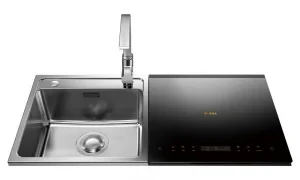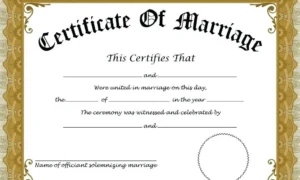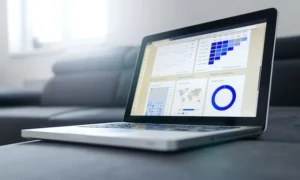Are you looking for an instant and secure way to extract attachments from OST file, then this blog is for you. Read teh complete article and download all OST email attachments.
Instant Solution: Try the Xtraxtor OST Attachment Extractor tool and download all OST file attachments. With its simple user interface, it is operatable by both technical and non-technical users. Using this tool you can also convert OST to PST, PDF, CSV, EML and many other file formats. along with that, you can also import OST to Gmail, Office 365, Yahoo and many other webmail accounts.
Overview – OST File
An OST file, which stands for Offline Storage Table, is a data file used by Microsoft Outlook in the context of email and messaging. It is primarily associated with Microsoft Exchange Server and Outlook, and it serves as a local copy of the mailbox data stored on the mail server. OST files enable users to access their email, contacts, calendar items, and other mailbox data even when they are not connected to the Exchange server. It’s worth mentioning that OST files are specific to the Microsoft Outlook email client and its integration with Exchange Server. Other email clients may have their own methods of enabling offline access and data synchronization.
Why Need to Extract Attachment from OST File?
Extracting attachments from OST files can be important for several reasons:
- Access to Important Files: Attachments often contain crucial information, such as documents, images, spreadsheets, and more. Extracting attachments allows you to access and work with these files even when you’re not connected to the Exchange server or when you’re using a different email client.
- Offline Access: OST files are used for offline access to mailbox data. If you’re working in offline mode and need to refer to or use an attachment, you’ll need to extract it from the OST file.
- Data Recovery: In cases where you accidentally delete emails from the server, having attachments extracted from OST files can help recover lost data. By extracting the attachments, you can retrieve valuable information even if the original emails have been removed.
- Migration to Another System: If you’re migrating from one system to another or switching to a different email client, extracting attachments from OST files ensures that you don’t lose access to important files during the transition.
- Backup and Archiving: Extracting attachments from OST files can be part of your backup and archiving strategy. By keeping a copy of important attachments, you ensure that you have a backup in case of data loss or server issues.
- Collaboration and Sharing: Sometimes, you may need to collaborate on or share specific attachments with others. Extracting attachments from OST files allows you to share these files with colleagues, even if they are not using the same email client or are not connected to the same Exchange server.
- Search and Organization: Extracting attachments can make it easier to search for and organize your files. You can use file management tools and techniques to categorize, tag, or search for attachments more effectively.
- Reducing OST File Size: Large OST files can slow down Outlook performance and consume significant disk space. By extracting and removing large attachments from the OST file, you can help manage its size and improve overall performance.
It’s important to note that extracting attachments from OST files might require specialized software or techniques, as OST files are not meant to be directly manipulated by users due to their complex and encrypted structure. If you’re facing specific needs related to extracting attachments from OST files, it’s recommended to consult with IT professionals or experts familiar with Outlook and Exchange Server environments.
How to Extract Attachments from OST File?
Extracting attachments from an OST file involves a few steps, but it’s important to note that OST files are not designed to be directly manipulated by users due to their complex and encrypted structure. As of my last knowledge update in September 2021, there isn’t a built-in method provided by Microsoft to extract attachments from OST files directly. However, there are some approaches you can consider:
- Convert OST to PST: One common method is to convert the OST file to a PST (Personal Storage Table) file format. PST files are more flexible and can be accessed using various tools. After converting, you can use Outlook or third-party tools to extract attachments from the PST file. Use Xtraxtor OST to PST Converter third-party conversion tool available that can help you convert OST to PST. These tools can vary in terms of features and compatibility, so it’s important to choose a reputable one that suits your needs.
- Third-Party Extraction Tools: There are specialized third-party tools designed to work with OST files and extract attachments. These tools can scan the OST file’s contents and extract attachments to a specified location. Some popular third-party tools for extracting attachments from OST files include. These tools might offer options to extract attachments, export emails, and perform other tasks related to OST files.
- Manual Method (Not Recommended): Manually extracting attachments from an OST file can be very complex and risky due to the file’s encrypted structure. It involves reverse-engineering the OST file format, which is not recommended for most users and can lead to data loss or corruption if not done correctly.
Before attempting any method, consider the following:
- Backup: Always create a backup copy of your OST file before attempting any extraction. This ensures that your data is safe in case something goes wrong during the process.
- Consult Professionals: If you’re not comfortable with technical procedures or dealing with sensitive data, it’s best to consult IT professionals or experts who are experienced with Outlook and email file manipulation.
Since my knowledge is based on information available up until September 2021, I recommend checking for the latest developments, software, and tools that might have become available after that date. Always use caution and ensure that you’re using reputable and trusted software when working with your email data.





























